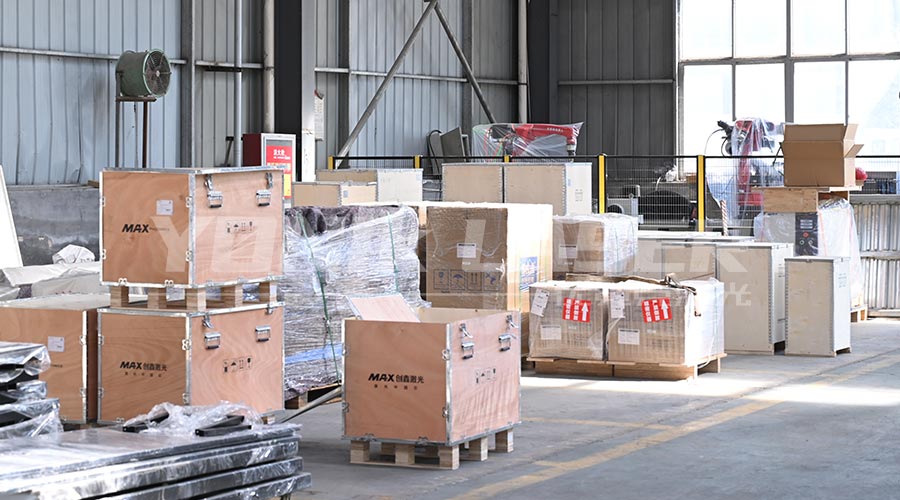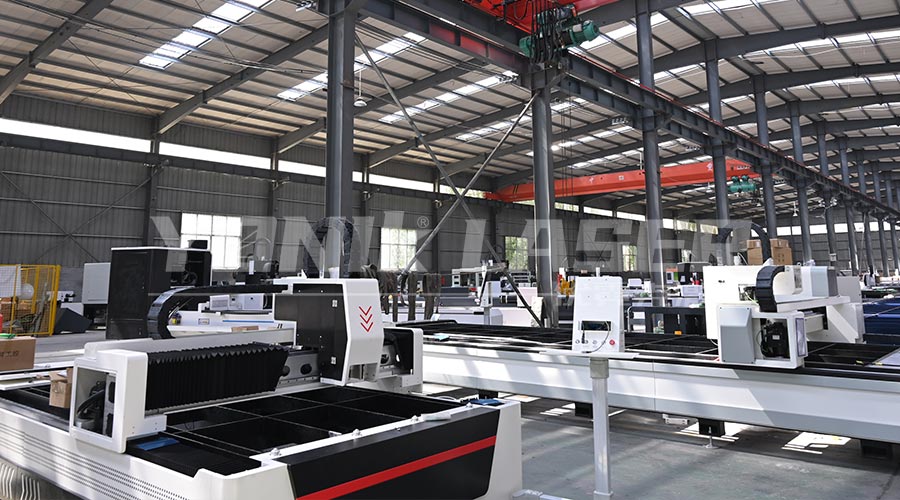In laser cutting processes, cutting deviations—such as non-vertical cuts, dimensional inaccuracies, and pattern misalignments—are common issues that plague many enterprises. These problems not only waste materials but also compromise the assembly precision of final products. The causes of cutting deviations are complex, involving mechanical accuracy, process parameters, material properties, and environmental interference. This article systematically analyzes how to avoid cutting deviations by addressing mechanical systems, laser parameters, material handling, and environmental control, providing practical guidance for enterprises to improve processing yield.

1. Mechanical System Precision: The "Hardware Foundation" of Cutting Accuracy
The mechanical precision of a laser cutting machine directly impacts the accuracy of cutting trajectories. Key areas to focus on include:
1.1 Servo Motors and Transmission Systems
The encoder resolution of servo motors and the backlash of transmission systems (e.g., gear racks or ball screws) are critical for positioning accuracy. For example, if the gear-rack meshing gap exceeds 0.05mm, cutting arcs may exhibit "jagged" deviations. Solutions:
Regularly inspect servo motor feedback accuracy (recommended quarterly) and calibrate transmission systems using laser interferometers;
Opt for high-precision planetary reducers (repeat positioning accuracy ≤0.01mm) to minimize reverse backlash.
1.2 Guide Rails and Slider Wear
Guide rail straightness errors and insufficient slider preload can cause cutting head vibration. For instance, a guide rail straightness error exceeding 0.1mm/m may lead to "wavy" cuts on straight lines. Solutions:
Monthly check guide rail surface wear and use leveling instruments to measure straightness;
Adjust slider preload (typically 50-80N) to ensure smooth cutting head movement.
1.3 Laser Head and Lens Condition
Laser head coaxiality deviations and contaminated focusing lenses can alter beam direction. For example, contaminated lenses may cause beam offset, resulting in a cut width difference exceeding 0.2mm when cutting 5mm carbon steel. Solutions:
Inspect laser head coaxiality daily (deviation should be <0.05mm);
Clean lenses every shift (using lint-free cloth + alcohol) and replace aged lenses quarterly.
2. Laser Parameter Matching: The "Software Control" of Cutting Deviations
Laser power, cutting speed, focal position, and other parameters must dynamically match material properties to avoid deviations:
2.1 Dynamic Balance of Power and Speed
Excessive power or low speed may cause material overheating and expansion, while insufficient power or high speed may fail to fully penetrate. For example, cutting 3mm stainless steel with 2000W power and 10m/min speed may result in a "tapered" cut (wider at the top, narrower at the bottom). Solutions:
Establish a material parameter library (e.g., 3mm stainless steel: 1800W power, 15m/min speed);
Use "power-speed linked control" to automatically adjust parameters based on material thickness.
2.2 Precise Control of Focal Position
Focal position shifts alter beam energy distribution. For example, lowering the focus by 1mm when cutting 6mm carbon steel may increase cut verticality error from 1° to 3°. Solutions:
Adopt "automatic focal calibration" (adjusting via feedback from standard sample cuts);
For thick plates, use "dynamic focal adjustment" (real-time focus shifts based on cutting depth).
2.3 Synergistic Optimization of Assist Gas Pressure
Insufficient gas pressure fails to blow away slag, while excessive pressure disrupts beam stability. For example, cutting 8mm aluminum with 25bar nitrogen pressure may cause "slag accumulation on one side" of the cut. Solutions:
Set pressure based on material thickness (e.g., 8mm aluminum: 20bar nitrogen);
Use "segmented pressure adjustment" (high pressure during penetration, low pressure during stable cutting).
3. Material Deformation Control: The "Hidden Cause" of Cutting Deviations
Thermal deformation of materials under laser heating is a common cause of cutting deviations. Solutions involve material fixation and process design:
3.1 Material Fixation and Fixture Design
Material warping or slippage may shift cutting trajectories. For example, cutting 2mm thin plates without a vacuum adsorption platform may cause dimensional errors up to 0.5mm due to thermal expansion. Solutions:
Use vacuum adsorption platforms (adsorption force ≥0.05MPa) or electromagnetic fixtures;
Design dedicated fixtures for irregular materials (e.g., L-shaped blocks + press plates).
3.2 Cutting Sequence and Path Planning
Irrational cutting sequences exacerbate material deformation. For example, cutting inner contours before outer contours may cause outer contour dimensional errors due to thermal expansion. Solutions:
Follow a "small-to-large, inner-to-outer" cutting sequence;
Use "micro-connections" (leaving 0.1-0.3mm uncut regions between contours) to reduce material freedom.
3.3 Material Preprocessing and Postprocessing
Surface oil or uneven stress in materials may worsen deformation. For example, uncalibrated steel plates may exhibit "sickle-shaped" deviations after cutting. Solutions:
Calibrate materials before cutting (flatness ≤1mm/m);
Add stress-relief annealing for high-precision parts post-cutting.
4. Environmental Interference Suppression: The "External Variable" of Cutting Deviations
External factors like temperature, humidity, and vibration may indirectly affect cutting precision:
4.1 Temperature and Humidity Control
Temperature fluctuations cause machine thermal deformation. For example, a 35°C workshop may increase cutting dimensional errors by 0.2mm due to guide rail expansion. Solutions:
Install climate control systems (temperature 20±2°C, humidity 45±10%);
Use thermal insulation for critical components (e.g., optical systems).
4.2 Vibration and Electromagnetic Interference
Ground vibrations or electromagnetic interference disrupt servo systems. For example, nearby stamping equipment may cause "elliptical" arc cuts. Solutions:
Mount the machine on an independent foundation (vibration isolation pad thickness ≥50mm);
Electromagnetically shield control cabinets (grounding resistance ≤4Ω).
5. Practical Cases: Comprehensive Management of Cutting Deviations
Case 1: Dimensional Inaccuracies in Automotive Panel Cutting
Issue: Cutting 1.5mm galvanized steel resulted in part length errors >0.8mm, causing assembly failures;
Diagnosis: Insecure material fixation (using ordinary press plates) + mismatched parameters (1200W power, 20m/min speed);
Solution: Switched to vacuum adsorption platform + adjusted parameters (1000W power, 25m/min speed);
Result: Dimensional errors reduced to 0.2mm, assembly pass rate improved to 99%.
Case 2: Misalignment in Sheet Metal Box Cutting
Issue: Cutting 5mm carbon steel boxes caused hole position deviations >1mm, preventing assembly;
Diagnosis: Irrational cutting sequence (outer-to-inner) + contaminated lenses;
Solution: Optimized cutting sequence (inner-to-outer) + daily lens cleaning;
Result: Hole position deviations reduced to 0.3mm, single-piece rework time cut by 40%.
6. Advanced Strategies to Prevent Cutting Deviations: From Reactive Correction to Proactive Prevention
6.1 Introduce Simulation Software
Use cutting simulation tools (e.g., SigmaNEST, Lantek) to model processes, identify deformation risks, and optimize paths/parameters in advance.
6.2 Install Online Inspection Systems
Integrate vision sensors into cutting heads to monitor cut width and verticality in real time, automatically adjusting parameters or halting operations if deviations exceed limits.
6.3 Establish Equipment Health Archives
Record machine temperature, vibration, and calibration data, using big data analysis to predict deviation trends and schedule proactive maintenance.

Conclusion
Cutting deviations are a "hidden threat" in laser cutting processes, influenced by mechanical, process, material, and environmental factors. Enterprises must establish a systematic deviation prevention framework: ensuring hardware reliability through high-precision mechanical systems, enhancing process stability via parameter optimization and material handling, and reducing external interference through environmental control. By adopting scientific prevention measures, enterprises can not only improve product pass rates but also extend equipment lifespan and lower comprehensive costs, providing reliable support for intelligent manufacturing.
2025-07-22
2025-07-21
2025-07-19